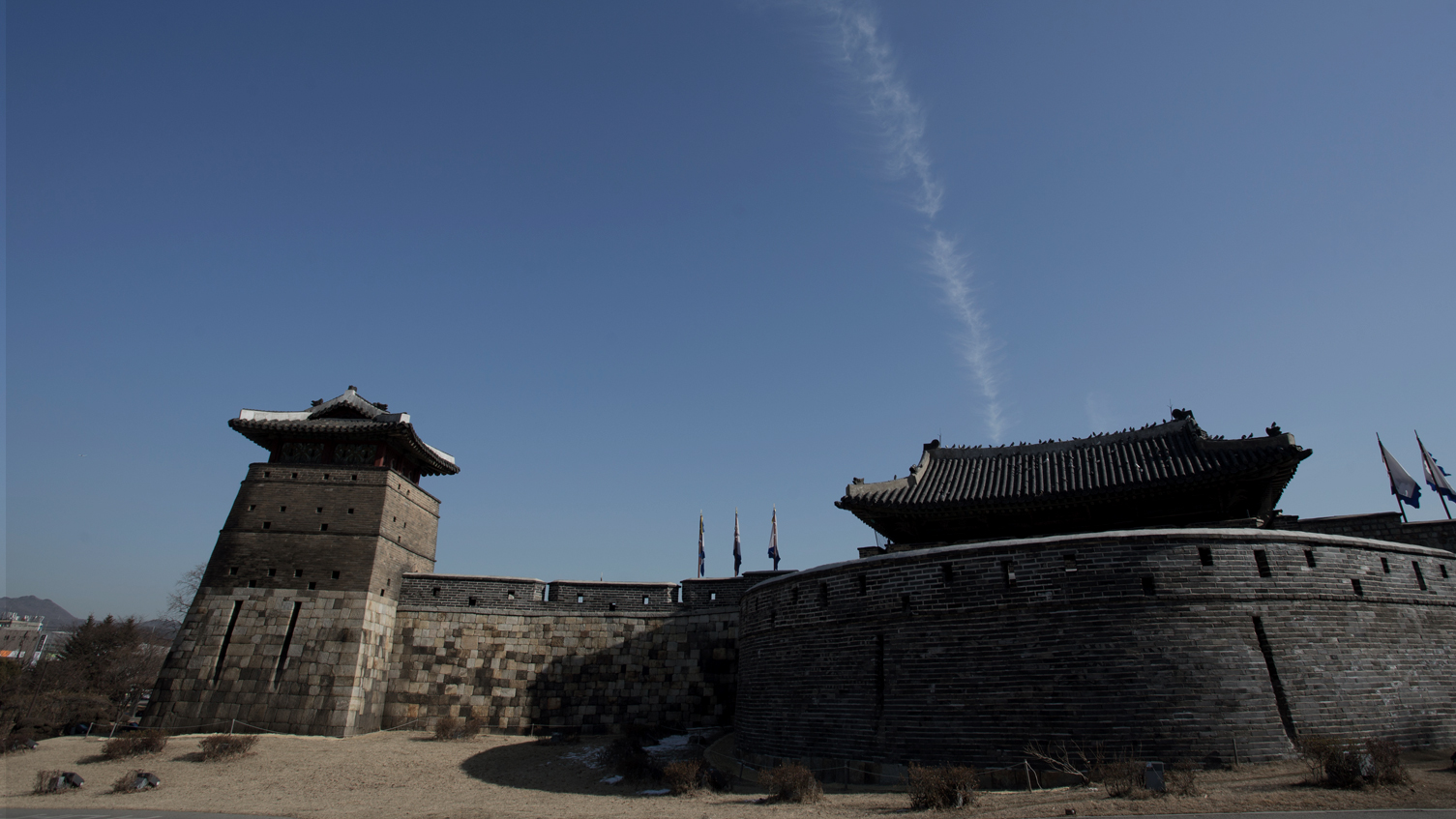
Recognized for its outstanding completeness and artistic value among all fortresses in Korea,
Hwaseong Fortress has been designated as a World Heritage site by UNESCO in 1997.
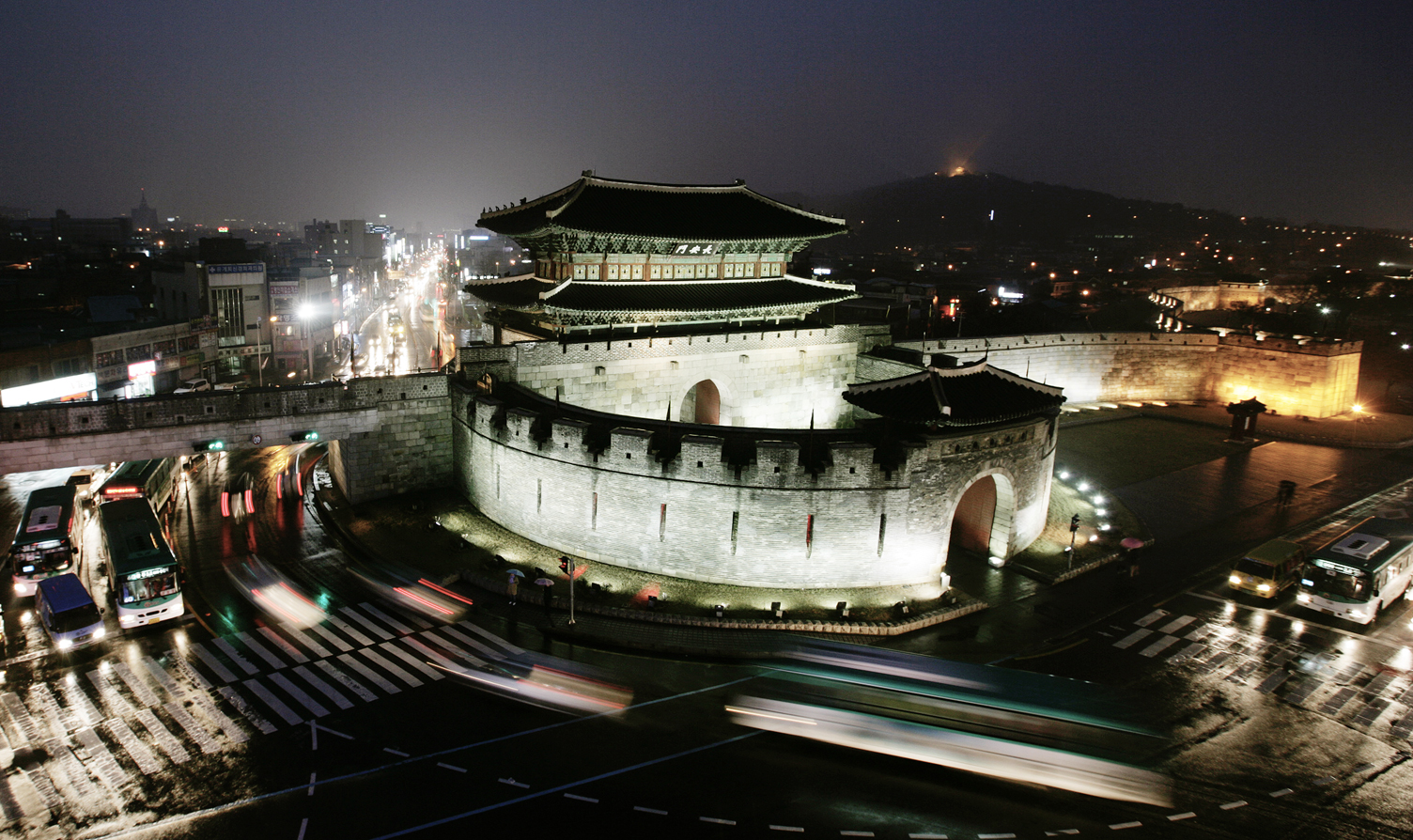
Essence of the 18C advanced construction technology
Throughout human history, fortresses have always demonstrated the most advanced technological and artistic value of the time. In Korea, Hwaseong Fortress in Suwon is arguably the best construction in terms of completeness and artistic merit. The construction of Suwon’s town fortress began in January 1794 and was completed in September 1796. As the 22nd king of the Joseon Dynasty, King Jeongjo relocated his father’s grave to Hwasan Mountain in Suwon and constructed Haenggung Palace, a temporary palace, under the mountain along with Hwaseong Fortress. The circumference of the fortress is approximately 5.7 kilometers long, and the height of the walls is 4~6 meters. The construction was designed by Yak-yong Jeong, based on the theory of the neo-Confucianism scholar Hyeong-won Yu, and is characterized by the combined use of stone and bricks and by its modern structure to defend against arrows, swords, and firearms.
Hwaseong Fortress was built by the nation’s most skilled master artisans, mobilizing more than 700,000 people.
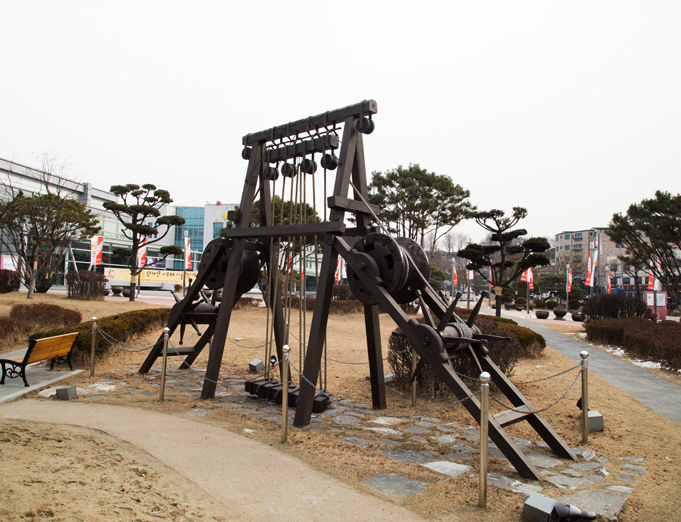
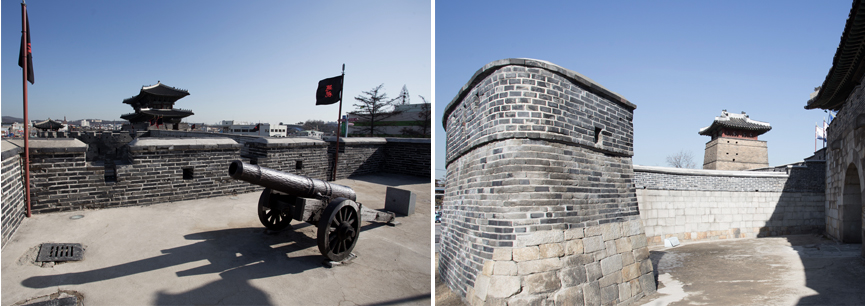
Also, a remarkable element of the fortress is the use of prototypes of cranes and carts. The 70 carts designed by Yak-yong Jeong carried the material load in 154 days, which would have otherwise required 324 days with 100 general carts. In addition, the 11 cranes helped reduce the construction period from ten years to two years and nine months. While the fortress was built mostly with granite, major defense facilities were built with bricks. The combination of stone, wood, and bricks gave birth to a new type of construction that had not been realized with conventional materials.
King Jeonjo’s filial piety, love for the people, and renovation of the old
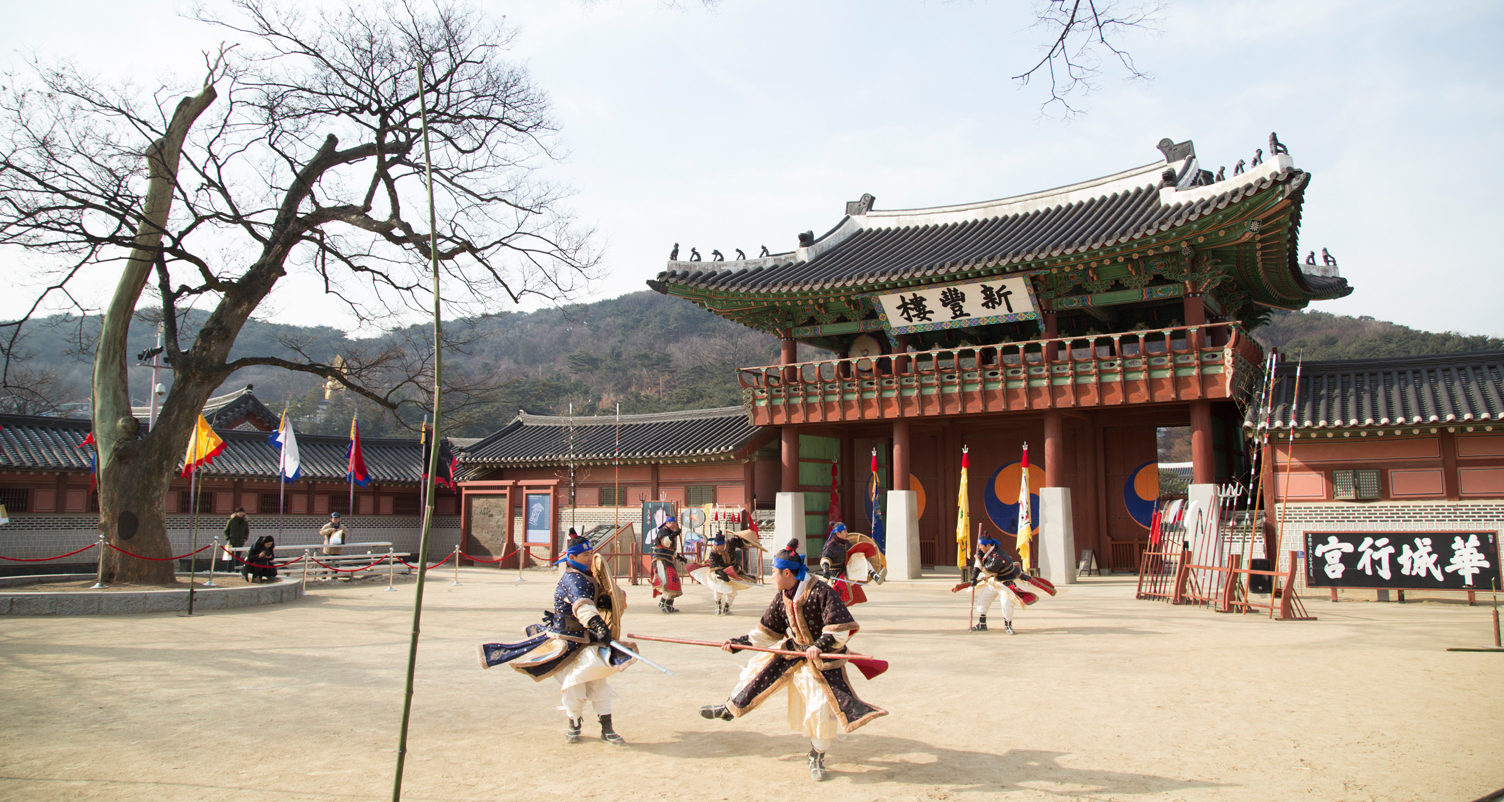
In celebration of the Year for Visit to Hwaseong Fortress, a performance of 24 martial arts and occasional experience events will be held for visitors all year round.
The 24 martial arts include a total of 1,026 movements, each of which presents simple yet impressive style.
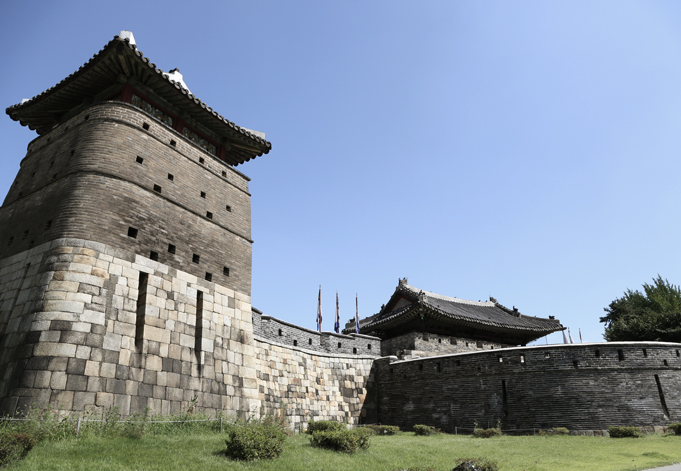
In the late Joseon Dynasty, King Jeongjo built a fortress with entirely new style by conserving traditions while accepting foreign culture. As a result, Hwaseong Fortress is often dubbed “the flower of all fortresses” since it closely reflects the military facility theories of both East and West and features a high level of defensive power. All records regarding the construction are included in Hwaseong Seong-yeok-ui-gwe, an authoritative book designated as a UNESCO World Record Heritage. Serving as a comprehensive report on the construction of Suwon Hwaseong Fortress, Hwaseong Seong-yeok-ui-gwe is a significant academic resource, but it is also of great value as a book demonstrating the elaborate type and advanced printing technology of the time. Furthermore, the book made a substantial contribution to the designation of Hwaseong Fortress as a UNESCO World Heritage in 1997, and the book itself was also designated as a World Record Heritage in 2007.

The fortress’s aesthetic value: beauty frightens enemy
Visitors who look up from Haenggung will find Seo-jang-dae, a command post, on the top of Paldal Mountain. From the post, they can also have a panoramic view of Suwon City. Jang-an-mun, the north gate, is the biggest fortress gate in Korea, even larger than Nam-dae-mun in Seoul. Another notable fact about Hwaseong Fortress is that its north gate serves as the main gate, while most other fortresses use their south gate as main entrance. This is because the north gate is the first gate in Suwon to meet the travelers from Seoul. Outside the north gate stands Hwa-hong-mun near the Suwon River. The name of this floodgate means “beautiful rainbow-colored gate”, depicting the scene when water flowed through its seven holes.
The fortress walls also prove the remarkable construction technology of the Joseon Dynasty. One example is the introduction of bricks as construction material. By using bricks together with granite, a usual building material for fortresses, it was possible to build sturdy walls completed with curving shapes and magnificence.
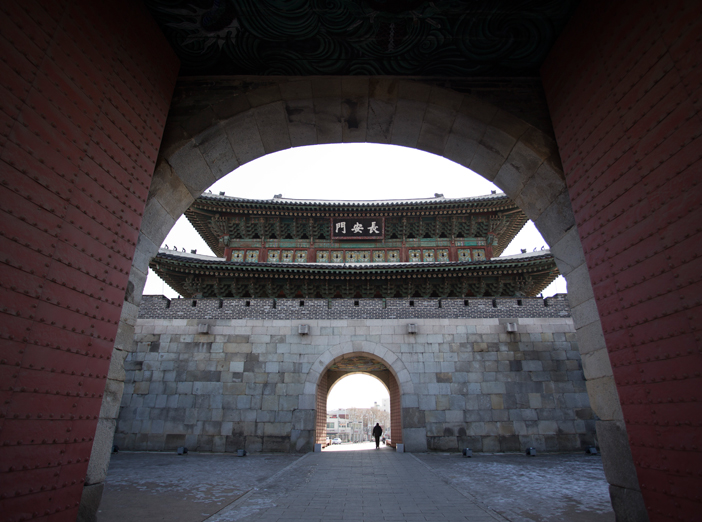
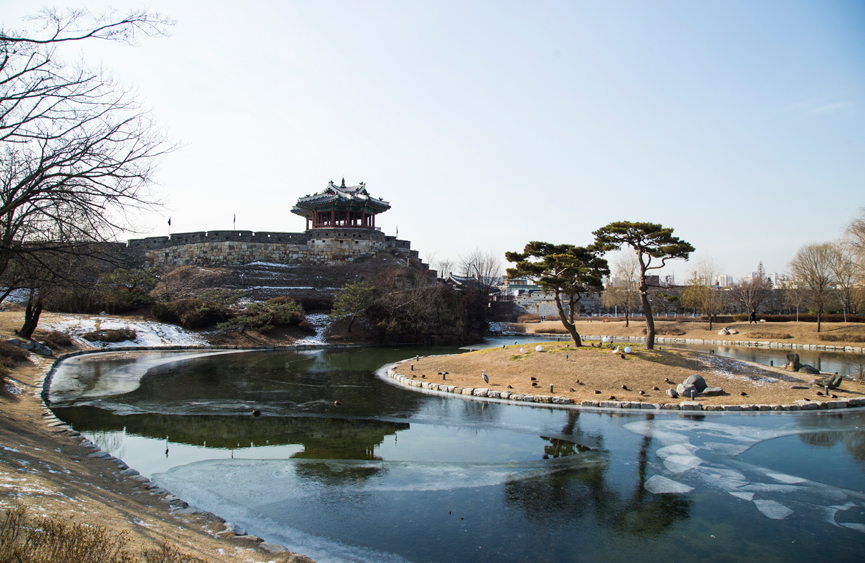
Bang-hwa-su-ryu-jeong, one of the watchtowers to monitor invasion, is by far the most beautiful spot within the fortress. Just like its name meaning “looking for flowers and going after willow trees,” the high-rising watchtower and the man-made pond below seem as though they are from a landscape painting.

In particular, it is still praised for maintaining the geographical features and environment while arranging facilities in the most appropriate places.
In junction with Suwon City’s tourism promotion in 2016, Hwaseong Fortress will become a magnet for tourists from around the world with its time-honored history and spirit of Korea.